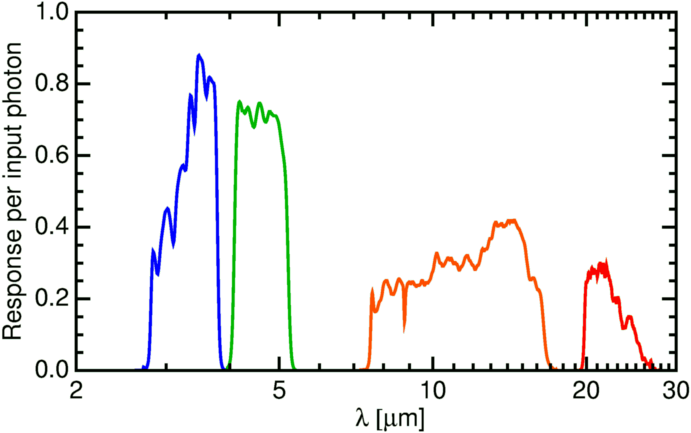geckzilla wrote:sallyseaver wrote:What I really like about this image is how it shows how a nebula is raw material for forming stars. And you can see where star formation has used up the surrounding nebula gases.
My understanding is that the orange-red gas around the orange crescent shape (that Alexander331 is referring to) is mostly hydrogen gas with some helium gas that is created by the multiple stars that are being born in the region. The hydrogen-helium gas is bumping into a clump of existing nebula gas and pushing it into the crescent shape. The proto-stars themselves are too small to be seen with the resolution of the image.
As a star forms, it actually creates and kicks out hydrogen and helium nuclei and electrons--the beginning of its stellar wind. You can see the mostly hydrogen (red) with some helium (orange) gas as part of star formation in the images below; these are images of proto-stars (called proplyds) from a study that the Hubble Space telescope did of the Orion Nebula. (The black in these images are multi-element gases that absorb the full visible spectrum of light.)

Those pictures illustrate artifacts around point sources. WISE resolution really isn't that great, and the stars tend to be all fuzzy partly because of the wavelengths, and I think partly also because of the way the data gets combined... Anyway, some sharpening filters have been applied which create some dark spots and rings, and infrared PSF's tend to form rings of dots.
It is also difficult to analyze the colors in this picture because they are more artistic than anything, but even when they are presented scientifically in the typical WISE color palette, red can sometimes be hydrogen-alpha emission, and other times it can be warm dust. Oftentimes it's both together. Context is important. And I think that saying this color is hydrogen and that color is helium is totally wrong. The bands being presented are wide, and you can see more about them here:
http://www.astro.ucla.edu/~wright/WISE/passbands.html

Looking at the graph it's easy to see that all of them will cover multiple emission lines, even if you don't know exactly where the emission lines are. Note also that we are supplied no information about exactly which bands were even used, though I suspect it is mostly a combination of W3 and W4.
Yes, the APOD picture of NGC 7822 is fairly low resolution. Thank you for the reminder that it is primarily infrared data in the APOD picture. So red would tend to mean higher temperature, or "warm dust," yes? The "artistic" use of the orange-red color (orWISE hydrogen-alpha emission colors) for the gases in the upper right of the large image (after you click on the regular APOD image) seem to match the optical colors associated with the early stages of proplyd [protoplanetary disk, or young star object] development, per the proplyd images I included.
Regarding the proplyd images and the characterization of hydrogen and helium gases, the images are in optical wavelengths.
"Only the NASA/ESA Hubble Space Telescope, with its high resolution and sensitivity, can take such detailed pictures of circumstellar discs at optical wavelengths."
https://www.spacetelescope.org/news/heic0917/
All of the colors and bands for the 2 proplyd images came from the Hubble Space Telescope ACS (Advanced Camera for Surveys) in the optical spectrum.
Colours & filters
Band | Wavelength
Optical, B | 435 nm
Optical, V | 555 nm
Optical, H-alpha | 658 nm
Infrared, Z | 850 nm
Infrared, I | 775 nm
I judged the information from this site regarding colors of dust and gases in telescope images to be usable.
http://www.clarkvision.com/articles/col ... llar.dust/
Do you disagree?
 NGC 7822: Stars and Dust Pillars in Infrared
NGC 7822: Stars and Dust Pillars in Infrared

